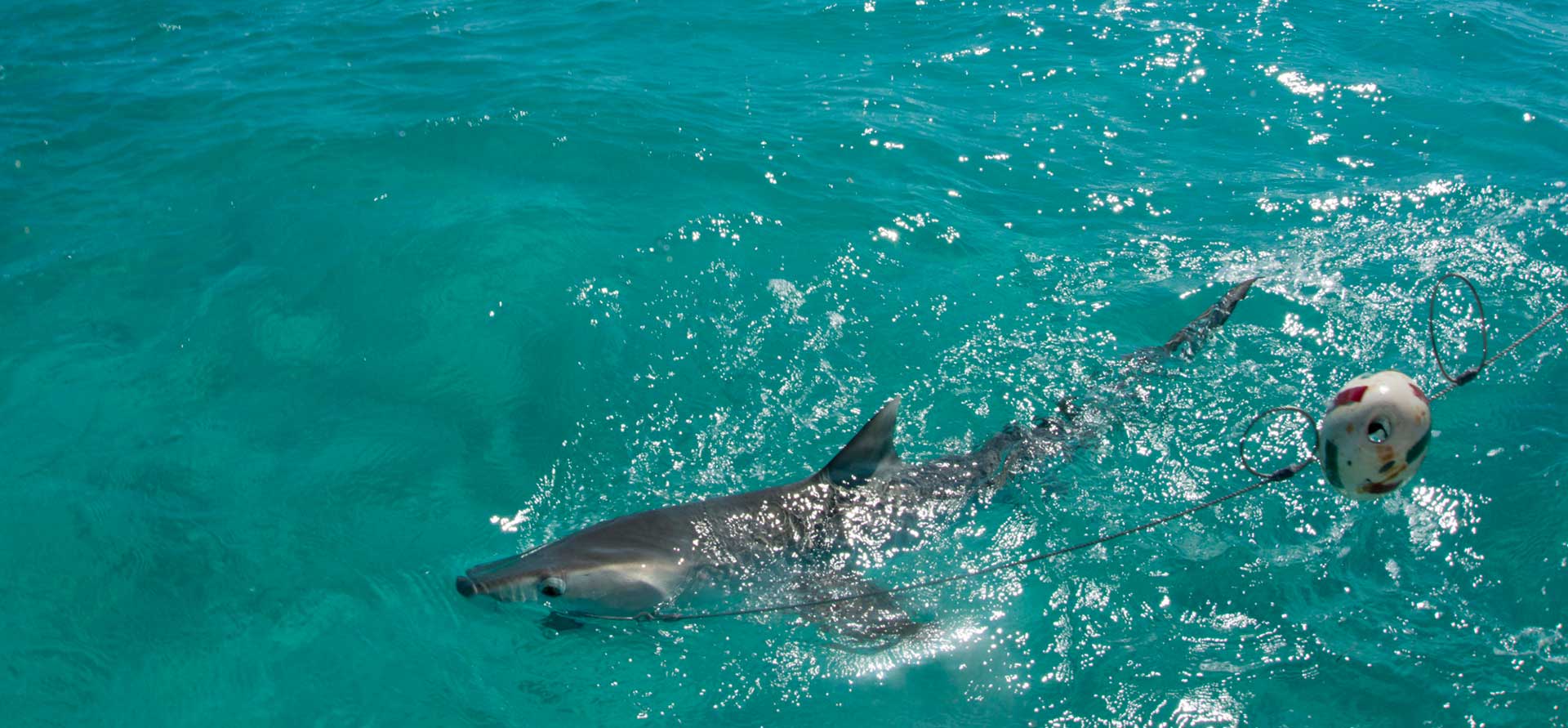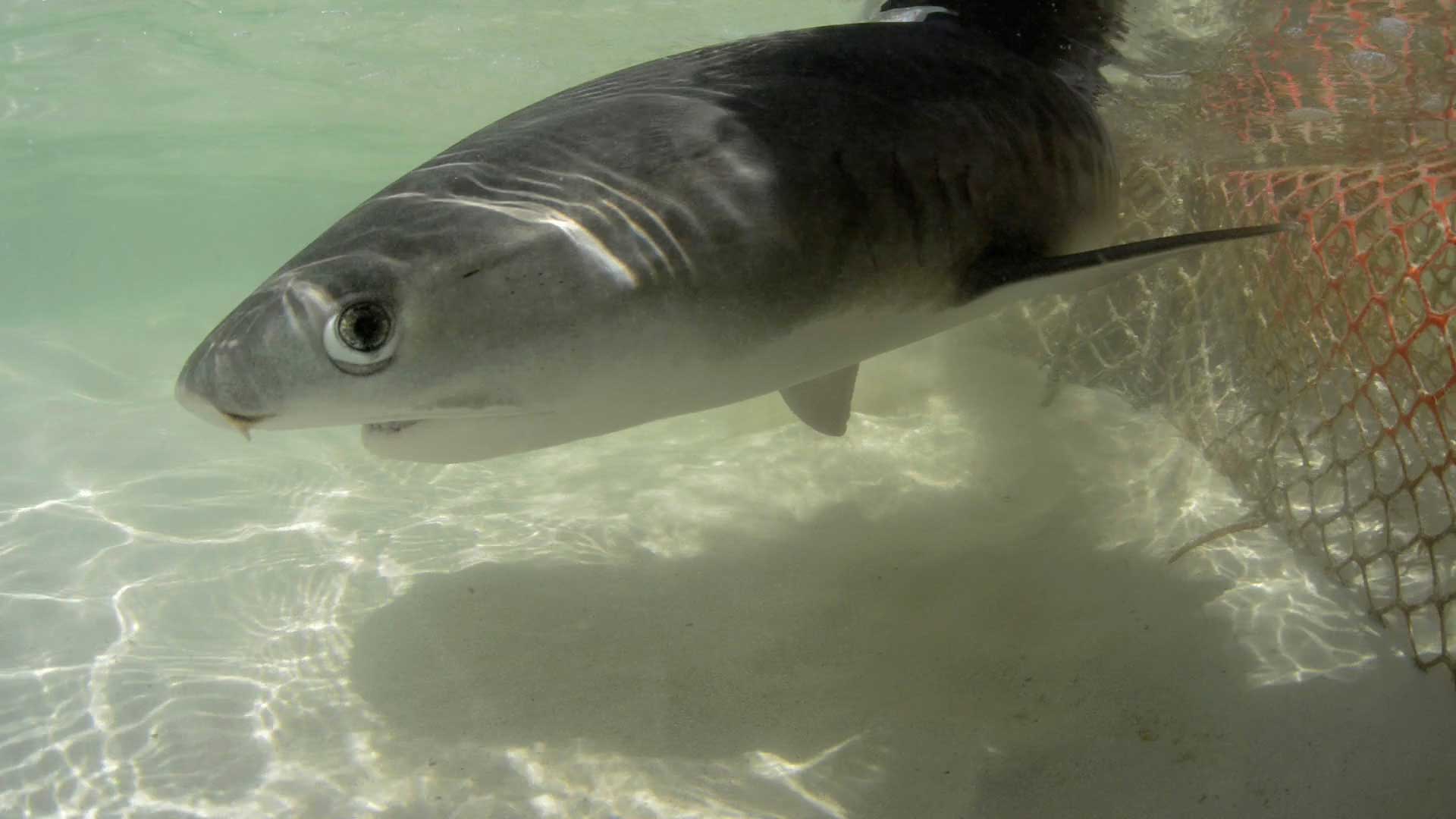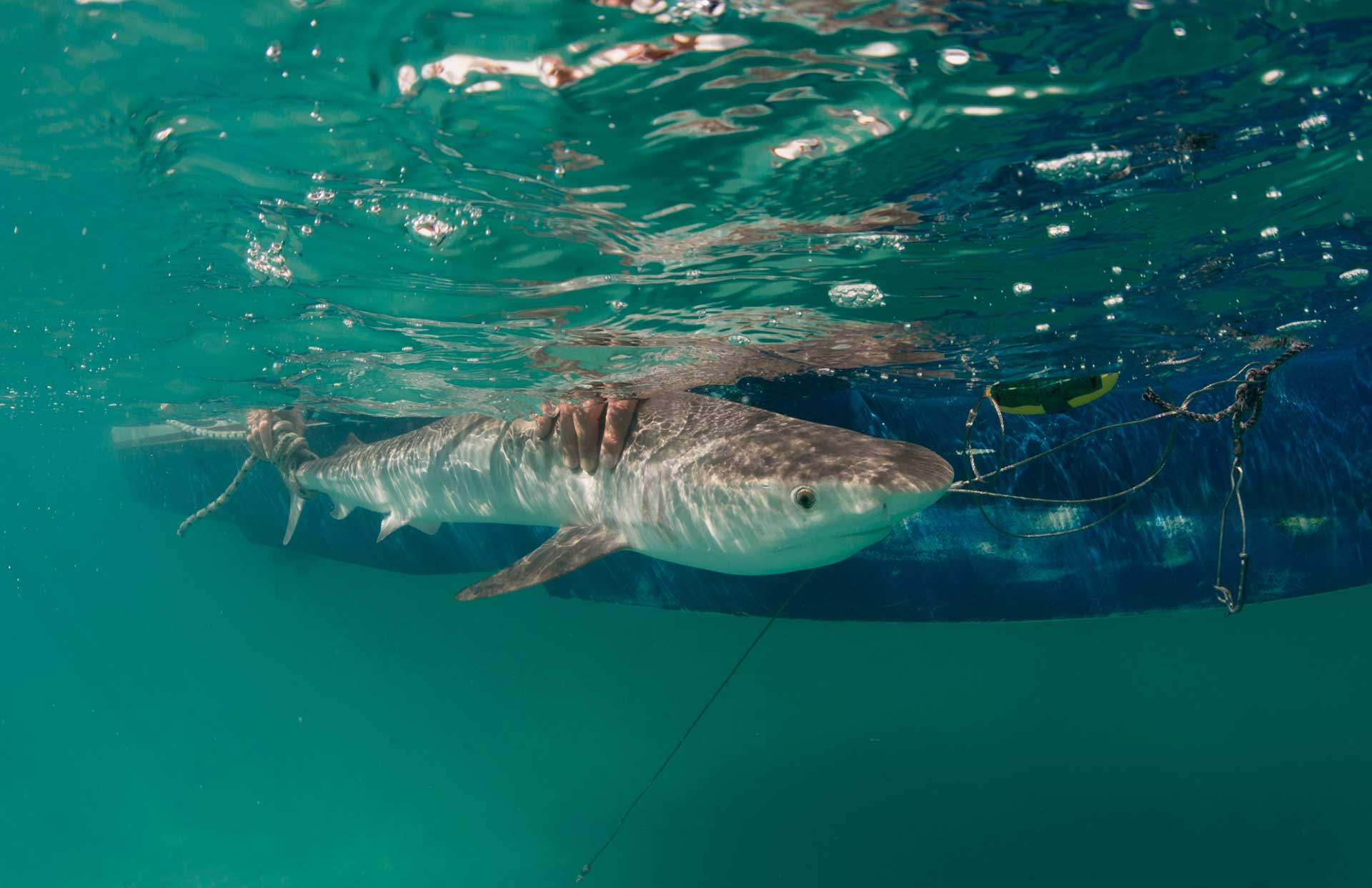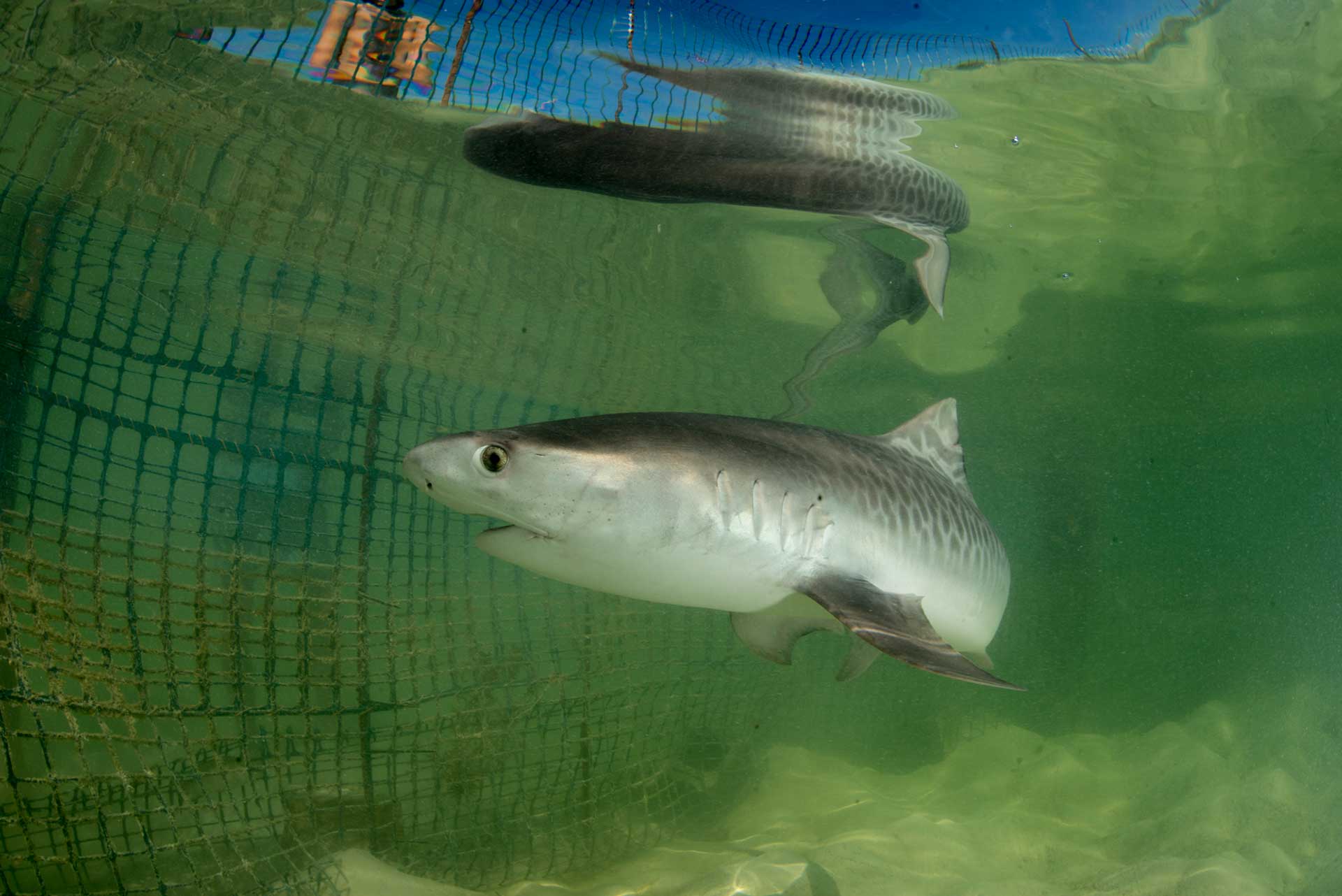Born to be wild
Tiger shark. For some people these words may conjure up an image of one of the ocean’s top predators: large, fierce and considered to be dangerous. Me, I think of one of the cutest and most distinctly patterned animals in the ocean. At the Bimini Shark Lab we regularly handle both versions, as we capture all sizes of tiger sharks. During any long-line check we might catch both mature and young-of-year individuals, often within a few hundred metres of each other.

Baby Tiger Shark caught on shallow water longline. © Photo Charlotte Sams | Bimini Biological Field Station - Sharklab
Handling a 3.5-metre tiger shark requires all members of the crew to be well trained and always on their toes. The shark’s sheer power and huge, gaping mouth with ragged teeth remind you that it is truly an apex predator in this ecosystem. The juveniles, on the other hand, are adorable, but you underestimate these fiery little sharks at your peril. From the moment they are born, juvenile tiger sharks must fend off larger predators in a habitat where there are few places to hide. They have to be aggressive to survive. Nevertheless, as rambunctious as they may be, baby tigers are a favourite of nearly everyone at the lab.

Tiger shark in pen being monitored after a workup. © Photo Charlotte Sams | Bimini Biological Field Station - Sharklab
My PhD research focuses on the movements and ecology of tiger sharks around Bimini. Luckily for me, they are the most frequently captured species on the Shark Lab’s monthly long-line surveys. The shallow sand and sea-grass flats around Bimini are a well-used habitat for this species, but little is known about its residency in the area. Tiger sharks are highly migratory, capable of travelling thousands of miles in a year, and they readily cross jurisdictional boundaries.

Tiger shark in pen being monitored after a workup. © Photo Charlotte Sams | Bimini Biological Field Station - Sharklab
Over the next couple of years the Shark Lab will be acoustically tagging young-of-year and mature tiger sharks with Vemco 10-year tags to determine their residency, dispersal and return rates. This information will be important to finding out whether females return regularly to Bimini to pup and whether their offspring use the area as a nursery ground. The Shark Lab’s array of 50 acoustic receivers will track tiger shark movements around Bimini, but the sharks are likely to venture far from this area for at least some period of time. Information from the Florida Acoustic Cooperative Telemetry (FACT) and Atlantic Cooperative Telemetry (ACT) arrays will be used to assess their wide-scale movements between The Bahamas and the United States. Like all shark species, tiger sharks are protected within Bahamian waters, but are susceptible to being harvested once they leave this sanctuary. Understanding their long-term, regional movements is important for the effective conservation of this wild, beautiful species.

Tiger shark in pen being monitored after a workup. © Photo Charlotte Sams | Bimini Biological Field Station - Sharklab
To keep up to date with Bimini Sharklab’s exciting research projects please follow us on Facebook, Instagram and Twitter
